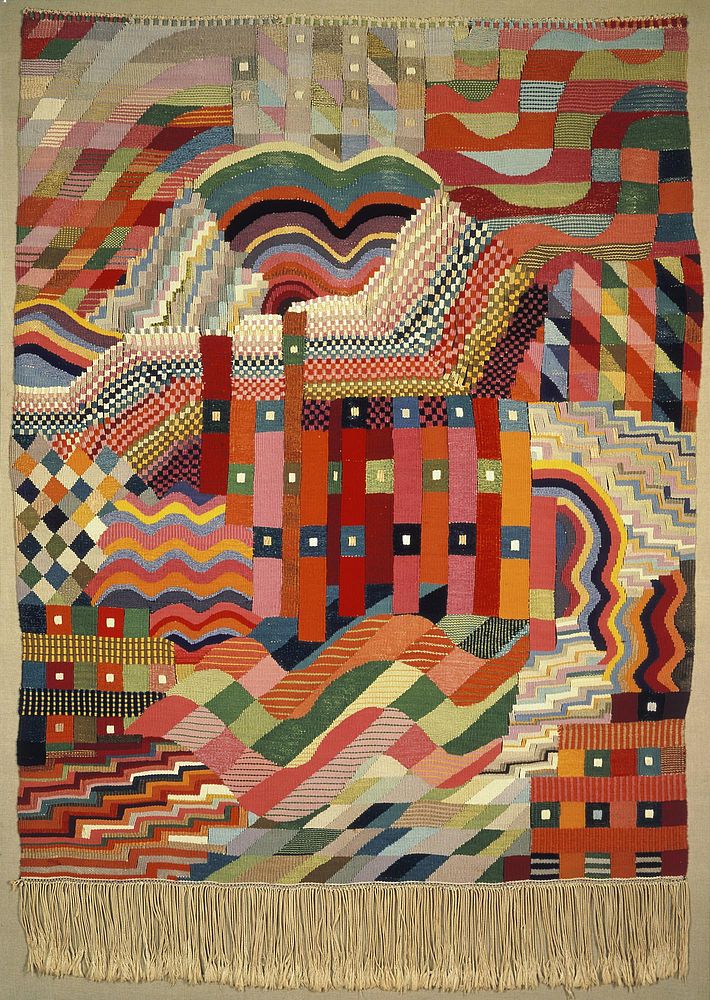Slit Tapestry Red-Green
Gunta Stölzl, 1927–1928

Schlitzgobelin Rot-Grün, Autor: Gunta Stölzl, 1927/1928.
[Translate to English:] text
For its director, the division of the Dessau textile class into a teaching and a production workshop opened up the possibility of exploring the artistic potential and design vocabulary of weaving. The ‘Schlitzgobelin Rot-Grün’ (Slit Tapestry Red-Green), for which Stölzl had drafted a large number of sketches, was created within this context. The dominance of the titular red and green contrasts supports and balances the bold composition. ‘Stölzl’s “Slit Tapestry Red-Green” speculates about what a tapestry might be if it were no longer a translation of painting into cloth but an exploration of weaving's own possibilities.’ (Annie Bourneuf)
- Literature:
- Bourneuf, Annie (2009): Ein spekulativer Gobelin. Gunta Stölzls „Schlitzgobelin Rot-Grün”, in: Bauhaus-Archiv / Museum für Gestaltung, Stiftung Bauhaus Dessau und Klassik Stiftung Weimar (Hrsg.): Modell Bauhaus, Ostfildern, S. 221–224.
- Stiftung Bauhaus Dessau (1997): Gunta Stölzl. Meisterin am Bauhaus Dessau. Textilien, Textilentwürfe und freie Arbeiten 1915–1983, Ostfildern-Ruit.